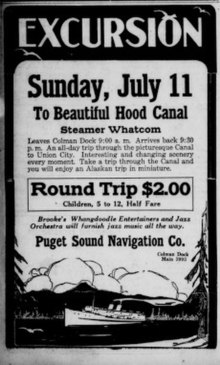The banjo is a stringed instrument with a thin membrane stretched over a frame or cavity to form a resonator. The membrane is typically circular, in modern forms usually made of plastic, originally of animal skin. Early forms of the instrument were fashioned by African Americans and had African antecedents. In the 19th century, interest in the instrument was spread across the United States and United Kingdom by traveling shows of the 19th century minstrel show fad, followed by mass-production and mail-order sales, including instruction method books. The inexpensive or home-made banjo remained part of rural folk culture, but 5-string and 4-string banjos also became popular for home parlour music entertainment, college music clubs, and early 20th century jazz bands. By the early 21st century, the banjo was most frequently associated with folk, bluegrass and country music, but was also used in some rock, pop and even hip-hop music. Among rock bands, the Eagles, Led Zeppelin, and the Grateful Dead have used the five-string banjo in some of their songs.
Ragtime, also spelled rag-time or rag time, is a musical style that had its peak from the 1890s to 1910s. Its cardinal trait is its syncopated or "ragged" rhythm. Ragtime was popularized during the early 20th century by composers such as Scott Joplin, James Scott and Joseph Lamb. Ragtime pieces are typically composed for and performed on piano, though the genre has been adapted for a variety of instruments and styles.

Scott Joplin was an African-American composer and pianist. Dubbed the "King of Ragtime", he composed more than 40 ragtime pieces, one ragtime ballet, and two operas. One of his first and most popular pieces, the "Maple Leaf Rag", became the genre's first and most influential hit, later being recognized as the quintessential rag. Joplin considered ragtime to be a form of classical music meant to be played in concert halls and largely disdained the performance of ragtime as honky tonk music most common in saloons.

The U.S. state of Washington has been home to many popular musicians and several major hotbeds of musical innovation throughout its history. The largest city in the state, Seattle, is known for being the birthplace of grunge as well as a major contributor to the evolution of punk rock, indie music, folk, and hip hop. Nearby Tacoma and Olympia have also been centers of influence on popular music.

Rick Benjamin is the founder and conductor of the world-renowned Paragon Ragtime Orchestra. Benjamin has an active career as a pianist and tubist as well as an arranger.
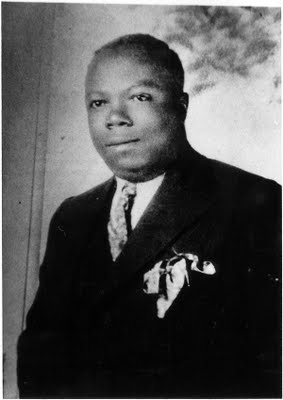
Benjamin Moten was an American jazz pianist and band leader born and raised in Kansas City, Missouri, United States.
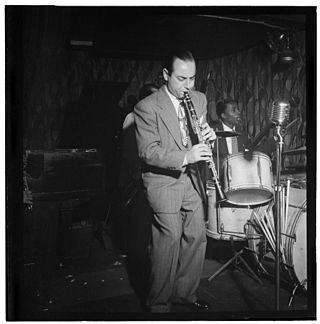
Michael Andrew "Peanuts" Hucko was an American big band musician. His primary instrument was the clarinet, but he sometimes played saxophone.
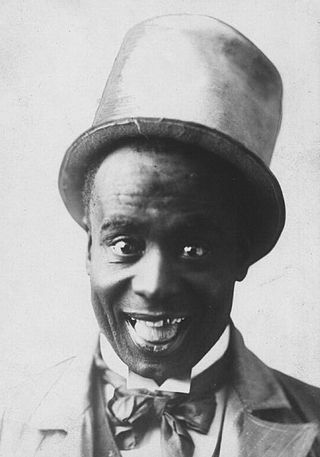
Ernest Hogan was the first African-American entertainer to produce and star in a Broadway show, The Oyster Man in 1907, and helped to popularize the musical genre of ragtime.
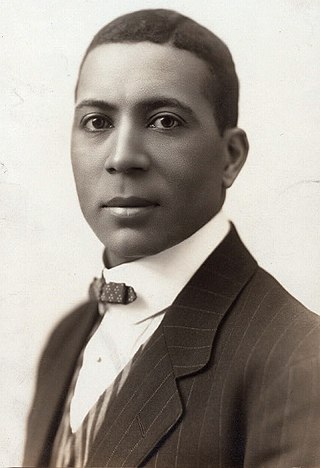
Sherman Houston Dudley was an African-American vaudeville performer and theatre entrepreneur. He gained notability in the late nineteenth and early twentieth century as an individual performer, a composer of ragtime songs, and as a member and later owner of various minstrel shows including the Smart Set Company. Dudley is also notable as one of the first African Americans to combine business with theater, by starting a black theater circuit, in which theaters were owned or operated by African Americans and provided entertainment by and for African Americans. He created the first black operated vaudeville circuit and led the way for what became the Theatre Owners Booking Association (T.O.B.A.).

In the 1970s in jazz, jazz became increasingly influenced by Latin jazz, combining rhythms from African and Latin American countries, often played on instruments such as conga, timbale, güiro, and claves, with jazz and classical harmonies played on typical jazz instruments. Artists such as Chick Corea, John McLaughlin and Al Di Meola increasingly influenced the genre with jazz fusion, a hybrid form of jazz-rock fusion which was developed by combining jazz improvisation with rock rhythms, electric instruments, and the highly amplified stage sound of rock musicians such as Jimi Hendrix. All Music Guide states that "..until around 1967, the worlds of jazz and rock were nearly completely separate." However, "...as rock became more creative and its musicianship improved, and as some in the jazz world became bored with hard bop and did not want to play strictly avant-garde music, the two different idioms began to trade ideas and occasionally combine forces." On June 16, 1972 the New York Jazz Museum opened in New York City at 125 West 55th Street in a one and one-half story building. It became the most important institution for jazz in the world with a 25,000 item archive, free concerts, exhibits, film programs, etc.

Patrick Henry Chappelle, was an American theatre owner and entrepreneur, who established and ran The Rabbit's Foot Company, a leading traveling vaudeville show in the first part of the twentieth century. He became known as one of the biggest employers of African Americans in the entertainment industry, with multiple tent traveling shows and partnerships in strings of theaters and saloons. Chappelle was described at that time as the "Pioneer of Negro Vaudeville" and "the black P. T. Barnum," and was the only African American to fully operate a traveling show solely composed of African-American entertainers.
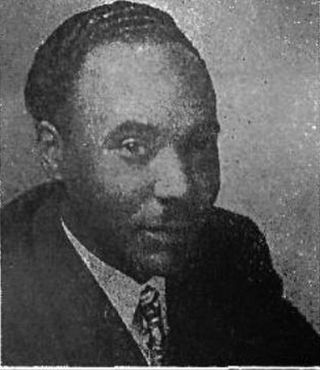
Howard Maceo Biggs was an American pianist, songwriter and arranger. He is noted for his involvement with doo-wop and other styles including jazz, and was influential in the first days of rock and roll.
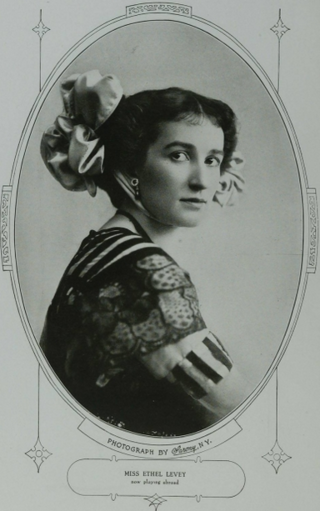
Ethel Levey, born Grace Ethelia Fowler, was an American actress, dancer, and singer in musical theatre and on the vaudeville stage. She was the first wife of George M. Cohan, and the second wife of aviator Claude Grahame-White.

Lafayette M. Hershaw was a journalist, lawyer, and a clerk and law examiner for the General Land Office of the United States Department of the Interior. He was a key intellectual figure among African Americans in Atlanta in the 1880s and in Washington, D.C., from 1890 until his death. He was a leader of the intellectual social groups in the capital such as Bethel Literary and Historical Society and the Pen and Pencil Club. He was a strong supporter of W. E. B. Du Bois and was one of the thirteen organizers of the Niagara Movement, the forerunner to the NAACP. He was an officer of the D.C. Branch of the NAACP from its inception until 1928. He was also a founder of the Robert H. Terrell Law School and served as the school's president.

Daniel F. Desdunes was a civil rights activist and musician in New Orleans and Omaha, Nebraska.

Freeman H. M. Murray was an intellectual, civil rights activist, and journalist in Washington D.C. and Alexandria, Virginia. He was active in promoting black home-ownership, opposing Jim Crow laws and lynching, and supporting positive representation of African Americans in public art. He was a founding member of the Niagara Movement and was an editor of its journal, the Horizon, along with W. E. B. Du Bois and Lafayette M. Hershaw. Alongside his other work, Murray was an important intellectual leader and wrote an influential book of art criticism. In this, Murray was one of the first historians of African American art. His work expressed a desire that art take seriously the representation of African Americans and that slavery not be overlooked in favor of representation of heroes and glory in public art.
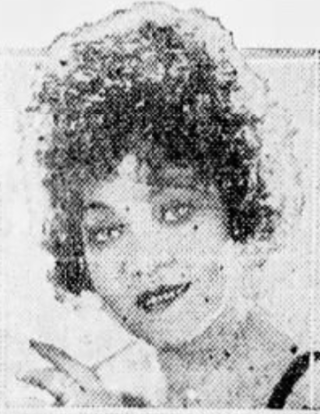
Gonzell White, also written Gonzelle White, was an American jazz, blues, and vaudeville performer in the United States.
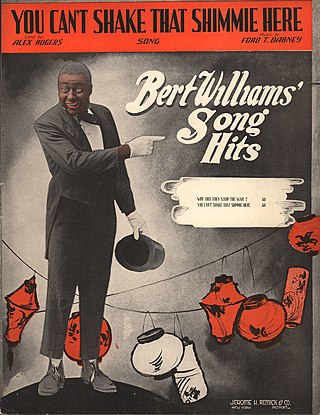
Ford Thompson Dabney was an American ragtime pianist, composer, songwriter, and acclaimed director of bands and orchestras for Broadway musical theater, revues, vaudeville, and early recordings. Additionally, for two years in Washington, from 1910 to 1912, he was proprietor of a theater that featured vaudeville, musical revues, and silent film. Dabney is best known as composer and lyricist of the 1910 song "That's Why They Call Me Shine," which for eleven point three decades, through 2022, has endured as a jazz standard. As of 2020, in the jazz genre, "Shine" has been recorded 646 times Dabney and one of his chief collaborators, James Reese Europe (1880–1919), were transitional figures in the prehistory of jazz that evolved from ragtime and blues — and grew into stride, boogie-woogie, and other next levels in jazz. Their 1914 composition, "Castle Walk" – recorded February 10, 1914, by Europe's Society Orchestra with Dabney at the piano – is one of the earliest recordings of jazz.
Frank D. Waldron (1890-1955) was an American jazz cornetist, alto saxophonist, trumpeter, composer, bandleader, and music teacher who lived in Seattle, Washington. He was born in San Francisco, California in 1890 and eventually moved to the Pacific Northwest by the beginning of World War I. When he initially moved to Washington, he began his performance career at Camp Lewis—known as Fort Lewis today—playing dance music at the local pavilion attended by soldiers and company. By 1915, he joined the Whangdoodle Entertainers, playing alongside pianist Coty Jones. Waldron and the Whangdoodle Entertainers became notable playing in underground clubs and speakeasies, typical of Prohibition-era jazz music. Following his time with the Whangdoodle Entertainers, he joined the Odean Jazz Orchestra. Later, the Odean Jazz Orchestra would be one of very few black bands to perform at Nanking Café in downtown Seattle which rarely incorporated the integration of black musicians in the night scene. In 1919 Waldron opened The Waldron School of Trumpet and Saxophone where he taught students such as Buddy Catlett and Quincy Jones. Waldron being an expert in his field, taught his pupils the basics of embouchure and phrasing, sight-reading, tonguing, furthermore even improvisation and ear-training. These specialized techniques were staple artistic skill for musicians to achieve before moving forward in their musical endeavors.

